Control of and transparency around animal welfare are key issues in our strategy to create trust in our products and supply chain. We want to take the lead in animal welfare discussions, and we take responsibility for controlling the welfare status in the supply chain. Our goal is to scale up our animal welfare programmes so that by 2025, at least 25% of the meat we sell (measured by sold value) is certified under a recognised animal welfare, and to increase this figure to 50% by 2030.
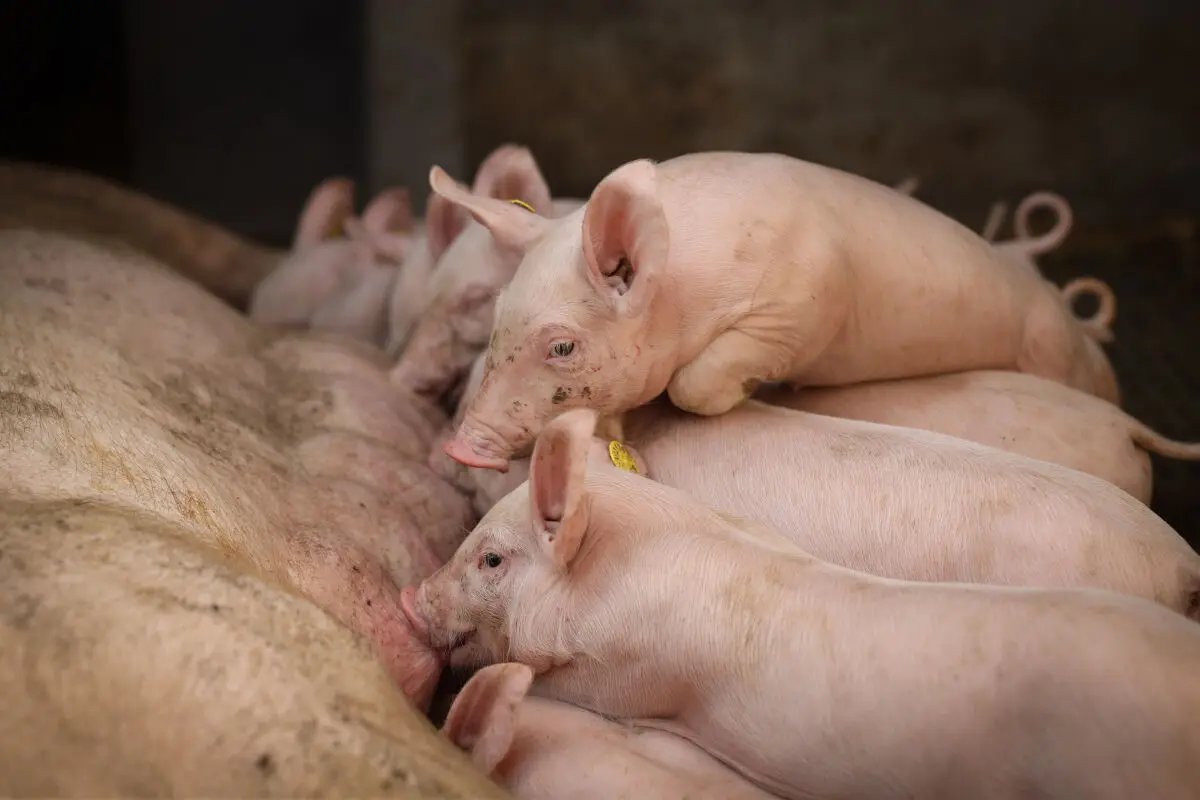
Our policy goes beyond the slaughtering process to also cover animal welfare at farms and during transportation. Under this we aim to:
We have animal welfare KPIs for the transportation, handling and stunning of animals, and we monitor these on a daily basis. It is obligatory for all animals to be properly stunned before slaughtering can proceed. Our aim is to achieve proper stunning at the first attempt. Every month, we report the figures to the executive committee. Regarding the slaughtering process, our target for 2023 is for 99.9% of animals to be properly stunned at the first attempt, so requiring no re-stunning.
Control of and transparency around animal welfare are key issues in our strategy to create trust in our products and supply chain
We work with farmers, customers and other stakeholders to stimulate and meet the increasing demand in the market for more animal-friendly meat. We favour using quality labels with standards for animal welfare and we work with stakeholders to develop these standards. Our Good Farming Star concept is based on the criteria of the Beter Leven Keurmerk 1-star label. More than 150 Dutch pig farms in our Good Farming Star supply chain are Beter Leven 1-star certified, and around 100 other farms are also Beter Leven 1-star certified. De Groene Weg not only conforms to the European organic standard, but is also certified with the Beter Leven Keurmerk 3-star label. Furthermore organic piglets are free from tail docking. This is valid for our organic chain De Groene Weg.
There is a strong link between animal welfare and livestock health. We therefore encourage farmers to invest in robust breeds. Dual-purpose breeds, such as Simmental in dairy production, not only provide more tasty beef with production that is more environmentally friendly, but their robustness generally derives from their suffering fewer diseases and a longer lifespan. Around one third of our cattle are dual-purpose or cross-breeds. The others are mainly dairy breeds.
In Germany, we are involved in working groups that aim to increase animal welfare at farm level in line with the “Initiative Tierwohl” concept of German retailers.
We enable the market to choose higher animal welfare standards in beef. We consider customers and consumers to be a very important driver in determining the development of animal welfare labels in the beef market and we are committed to developing this market segment.
The qualification of weidegang (access to pasture) is also actively stimulated in the supply chain and to consumers.
At Sedef, we take our responsibility for food safety and human health very seriously. When it comes to antibiotics usage, we recognize the dilemma between animal welfare and potential transmission of antibiotic resistance to humans. While sick animals require treatment with antibiotics to ensure their welfare, we also understand the importance of minimizing the transmission of antibiotic resistance in food safety assurance schemes.
To address this, we have banned antibiotics that are considered critical for humans in all our pork supply chain programs, such as QS (Qualität und Sicherheit) and GlobalGAP. In addition, we continuously review and update our list of banned antibiotics to include those projected to be designated as critical to humans by the WHO.
Through various projects with universities, customers, and industry associations, we have determined that Sedef pork plays a minimal role in the transmission of antibiotic resistance to humans. However, we remain committed to monitoring our products to ensure that they do not contain any antibiotic-resistant genes relevant to human health. Such genes are at the heart of the problem around antibiotic resistance.
To ensure our suppliers adhere to our policy, we use a combination of the German governmental monitoring program and our own monitoring program to check for veterinary drug residues in animals slaughtered in Germany. With this risk-based program, we can ensure that legal withdrawal periods are respected and that the animals in our supply chains do not contain any non-compliant substances. We are committed to continuously improving our monitoring system to provide the highest level of food safety and human health protection.
At Sedef, we recognize that the welfare of animals during transportation is critical, as the animals are handled and placed in unfamiliar settings. We have strict guidelines in place to minimize stress and ensure animal welfare. The transport distance and circumstances are two important factors to consider. Our policy is that animals in poor condition must not be transported, and our transporters must fulfill all regulatory requirements for animal transportation.
To minimize transport distances, we utilize our decentralized network of appropriately sized locations, ensuring that animals are transported for the shortest distance possible. In most cases, the maximum transport distance is 200 km, which is equivalent to a maximum of four hours in transport. We also ensure good route planning to keep transport times below the legal maximum of eight hours. We publish data about the origin of livestock for each facility on our transparency website. In 2022, we conducted online and face-to-face training programs for all transporters of animals to ensure their fitness to be transported.
At Sedef, we take a broader responsibility to ensure the welfare of animals delivered to us. In addition to an inspection by an external and independent veterinarian, we conduct standardized checks at every unloading of the animals. All individuals who handle animals are trained to recognize all relevant aspects of animal welfare, and every individual animal is examined to assess whether animal welfare is assured. If there is any doubt about the welfare of an individual animal, all resources are available to restore animal welfare or to stun the animal according to best practices.
Data concerning the welfare of animals delivered to Sedef is shared with both the animal transporter and the originating farm to support improvement programs on animal health and welfare at the farm and during transport. We also report data concerning the condition of animals received by us to farmers and transporters.
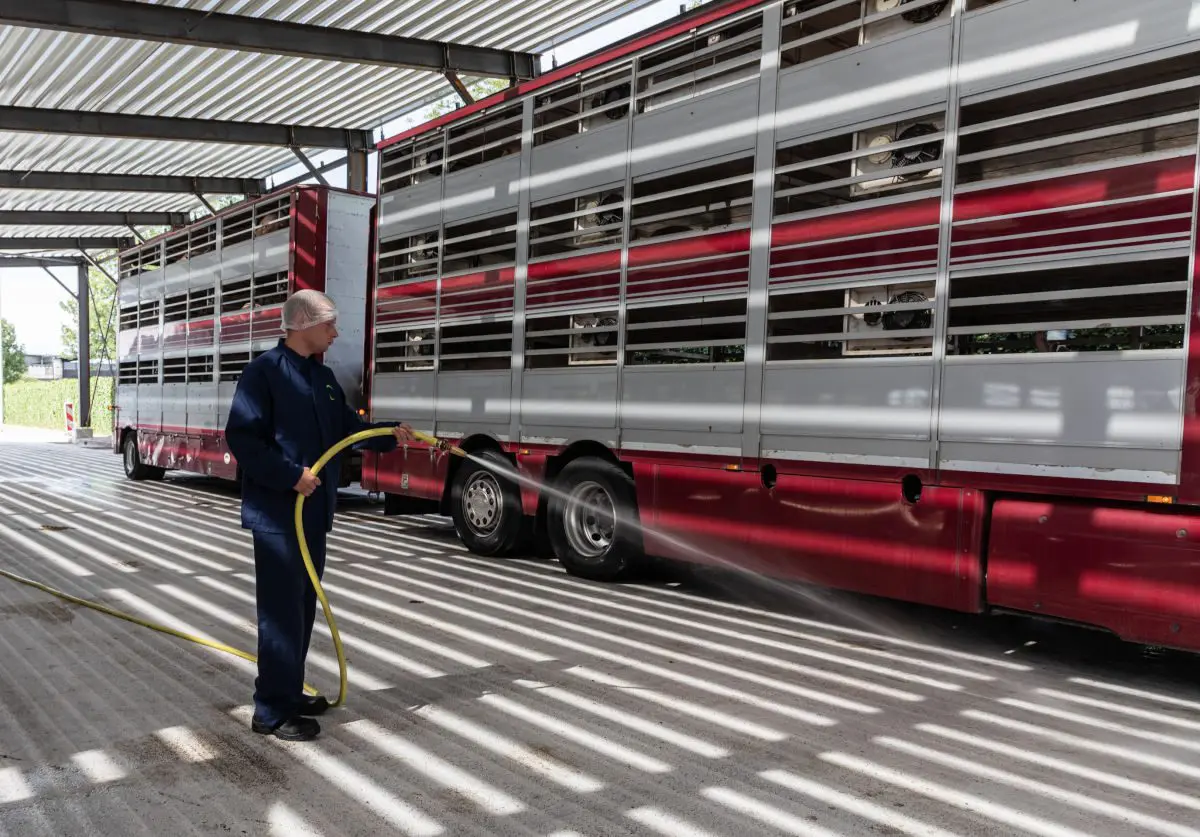
We acknowledge that animals can only be transported when weather conditions allow for a stress-free transport. During recent years, weather conditions have changed which have resulted in some days when temperatures have been too high to allow a stress-free transport. Since 2018, we are working according to a protocol to prevent heat stress during transport. This protocol takes effect when a temperature above 27°C is forecasted.
All animals within our care are always stunned before slaughtering. The stunning methods used at our plants comply with regulations, such as EU regulation 1099/2009. All animals are individually examined by trained staff between stunning and bleeding. With each sign (e.g. eye reflex) that could be related to sub-optimal stunning practices, an immediate re-stun of a carcass is mandatory.
We control animal welfare at all our slaughterhouses with measures that include:
When the competent authorities issue warnings or fines for a specific element in our process which needs improvement, we always publish those inspection results on our website.
Sedef’s performance in the Business Benchmark on Farm Animal Welfare
The Business Benchmark on Farm Animal Welfare (BBFAW) evaluates the world’s leading food producers, retailers and food service companies regarding their management and reporting of farm animal welfare. The report of March 2021 showed that Sedef performed at Tier 3 of the Benchmark.
Extreme temperature protocol
We have updated the extreme temperature protocol for days with temperatures above 27 degrees Celsius with measures like:
At temperatures of 35°C and above, all transport of animals is halted. During 2020, this resulted in reduced slaughtering times where one shift per day was removed from the schedule during several days of hot weather.
African swine fever
Together with other stakeholders, parking places next to highways were identified as high-risk locations. A number of measures had already been taken, for example, the installation of boar-resistant trash cans, fences, and signs.
Continuous improvement of all procedures is in our DNA. This is also true of improvements in animal welfare. The following initiatives have been taken:
We publish all official observations by the government, such as warnings, fines and audit results, as well as third-party audits on its website. With this instrument of transparency, every stakeholder can check our performance on animal welfare, hygiene and product integrity.
We carried out an investigation to improve the design of the lairages and passageway to stunning
Tail docking early in the life of the pig has a long history in pig husbandry as a measure to prevent tail biting. Tail biting can cause serious problems for the welfare of the pig and the quality of the meat. Preventing tail biting is therefore an important topic.
It is evident that the tail is not rudimentary – a pig’s tail has a clear physiological and social function. With a tail, the pig can tell whether it feels stressed or comfortable. Without a tail, the pig is missing a part of its communication palette. For several years, we have encouraged farmers to adjust the point of docking, so that pigs have a tail of sufficient length to communicate.
We do see that tail lengths clearly differ from farm to farm. To get farmers to abide by this measure, we need more objective information. To know exactly what the average tail length is of pigs at every farm, we need to measure all the tails. We have therefore developed a fully automatic measuring system. Using a so-called ‘vision’ system, we measure the tail length of each individual pig. Using the information of the individual pig, we can gain insight into the performance of the whole farm. We can then compare farms with each other and get them to learn from other farmers. We believe that by starting a conversation on tail size based on actual information, we can get specific farmers to alter their tail docking practices. By doing this, we contribute to achieving a higher standard of animal welfare.
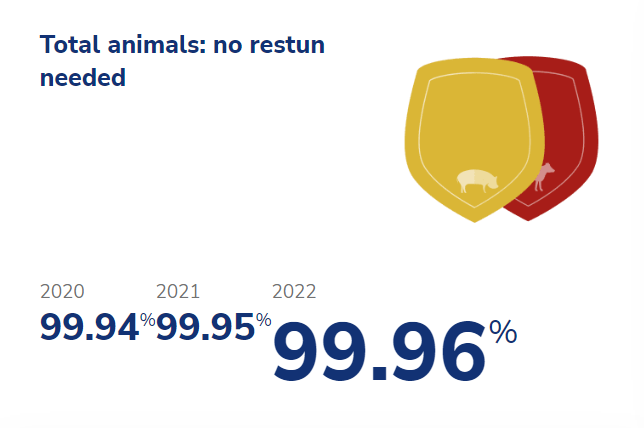
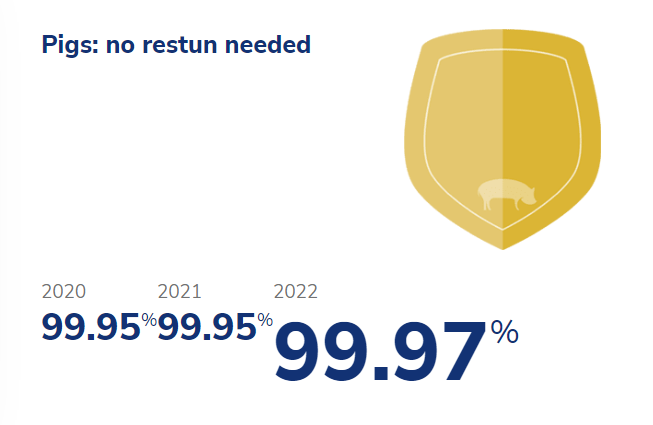
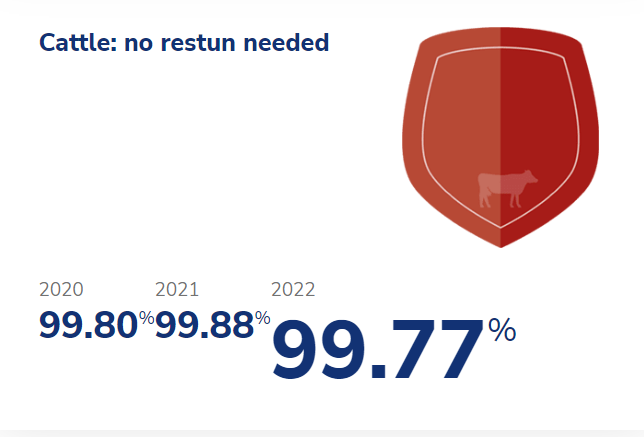
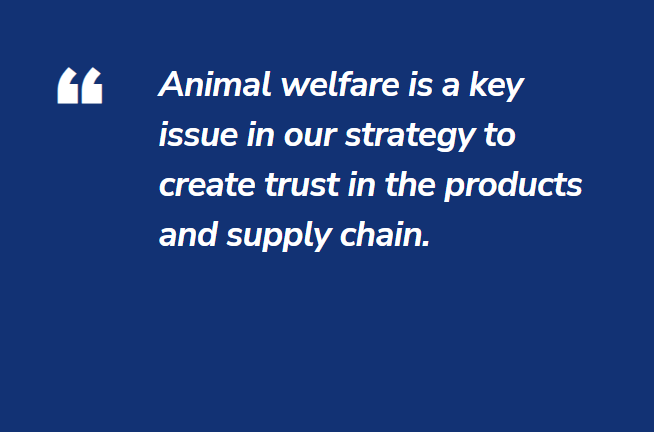
Our very strict rules relating to re-stunning result in the re-stunning of animals that are in fact already effectively stunned. Due to the biological and physiological mechanisms in animals, a certain percentage of stunned animals will show signs that could be interpreted as being related to consciousness despite effective stunning. The policy is that it is better to be sure than wrong.
This KPI therefore shows both the effectiveness of the stunning and the alertness of the workers on the line to act when needed. Therefore, the actual figure for no re-stun required will never be 100%.
© 2010 – 2023 Sedef SA. All right reserved.